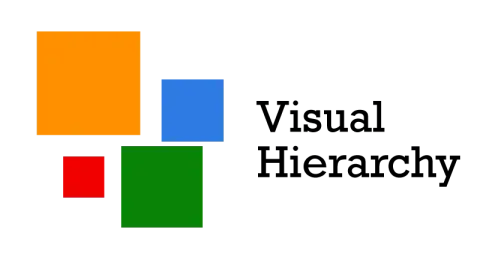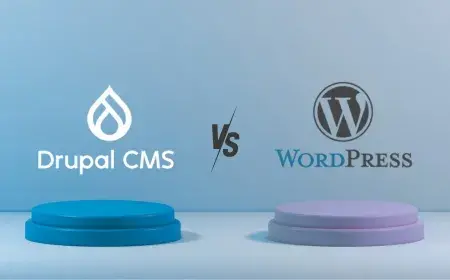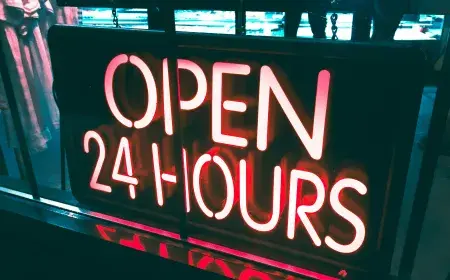Visual hierarchy, especially on an e-commerce website, is a way too powerful “weapon” for you to underestimate it or to ignore it!
When used right it empowers you to steer your visitors' attention on key elements on your website and, moreover it eases their “job” as visitors (possible future shoppers), too. We all need guidance so that's precisely what you'll be offering your visitors: guidance. You'll build “bridges” between different types of content on your website so that they can navigate through, smoothly, without getting disoriented or discouraged by a rigid, monotonous block of content.
By joggling with different sizes, with contrasting colors, with spacing and with overall layout, you determine what gets noticed first and which elements on your website carry more “value”.
Therefore, you discreetly guide your visitors towards “key” components doing them a favor: making their journey time-efficient. They get from point A to point B (your shopping cart page) as quickly and intuitively as they hoped when they landed on your website.
Your make your website “usable”, you upgrade it with “usability”, which is the to foundation stone of user experience.
Enough beating around the bush now: here are 6 “way too powerful for you to ignore” methods that you could use for crafting efficient visual hierarchy on your e -commerce website, 6 techniques that any Toronto web designer should add to his/her own "toolbox":
1. Be Generous With Your Negative Space
Remember that we've “talked about” the white space's importance when we pointed out how the human brain reacts to differently to different colors (in our post on user psychology and web design)? It's there that we mentioned that white space “helps you put together a clean, pure design, one showcasing certain elements of your work“?
Well, well, well! It's time to start perceiving this “empty space, “white space” or “negative space”, however you wish to call it, as a distinctive “element”, one claiming its real importance, and not just as a “absennce of elements”.
Once you've started perceiving it as an element on its own, you should consider it the card up your sleeve that you could use for grabbing your users' attention and for steering it towards elements of high importance on your website.
How? Here are just a few examples:
- be generous with spacing between paragraphs and with the margins framing your blocks of text so that your shoppers can perceive your written content as “important” (we talked about “adding value” through visual hierarchy: well this is an example of “how it's done”) and “digest” it more easily
- put your call to action button into the spotlight by simply adding more negative space around it. It's that white space that will set it apart from the rest of the elements on your website and make it instantly pop out!
- dare “derailing” from the so very “trendy” and overly used web deign practice where you place a large image on your front page to draw attention to and you “suffocate” it by other elements crowded around it. Give this central, visually-arresting image a bit (jut a bit more, no need to exaggerate now) more space, white space, and you'll instantly balance out the whole layout and, moreover: your attention-grabbing central image will grab even more attention now with that “barrier” of negative space framing it!
2. Juggle With Different Sizes
Get playful, get daring, but mind you don' forget that: balance makes it efficient after all!
Therefore, enjoy the power of “manipulating” that size invests you with, make sure you don't “sabotage” yourself!
Neighboring elements of different sizes, where some are a lot bigger than others, will draw attention to the oversized one, that's true, but it might as well cast an unwanted veil of shadow on still quite important sections on your website. And you don't want that!
So, make use of this technique while remaining conscious of its counter-effects, of the importance to keep a certain balance in everything.
When it comes to e-commerce web design, we recommend you to play with sizes on your homepage, on the key imagery and text that you have there!
3. Think Contrast When Choosing Your Color Palette
As we already mentioned in the introductory paragraph: you need to adopt a more refined color contrasting technique than the now rudimentary ones like: “paint it all in red” or “set it against a background in a muted color”.
You need to start thinking through how you actually pair those colors, how you group them on your site.
Go for wining “combos” of red-and-green, yellow-and-purple, orange-and-blue and variations of these combinations of complementary colors.
Think through the selection of your call-to-action and sales announcing elements. Challenge your skills at pulling off the most efficient eye-catching color contrasts: go for a black background and neon colors or simply make sure the elements on your website (images, texts) neighboring thoae key elements that you want to draw your visitors' attention to, are in contrasting colors.
So, you've got our point: bid on color contrast and start viewing the colors on your website as parts of a whole “ecosystem” where each color can outshine/be outshone by or highlight/be highlighted by its neighboring colors.
4. Grab Attention Through The “Static vs In Motion” Effect
It's a scientifically proven fact: our attention gets instantly caught by things/persons in motion. The question that arises now is: how are you going to use this information for determining, in advance, what your shoppers should notice first once on your website?
You have three options for getting the most out of “motion's power”:
- you add one or two discreet animations here and there, on key places on your website. And here we need to stress this idea of “discreetness”: your animations should be subtle; it's highly important that you don't go too far. It's quite easy to overdo it, you know, and instead of “cunningly” driving your visitors' attention towards the elements of major importance to you, to annoy them instead, to drive them off your website due to your too flashy, bling-bling animations. Not only that these “overly flashy” animations will annoy your shoppers, but they'll steal even the minimal attention away from the other elements on your website. And you don't want that!
- you add an auto-playing video. Again, be very cautious not to go for a too absorbing video that leads to nothing (no subscription, no purchase). One of the best practices in this case it to design pages around your video, that your visitors should be discreetly “tempted” to access.
- you go for a photo-video hybrid. They're such a popular trend in e-commerce web design these days! No wonder, for they put together the visual power of an image with the one of a motion, the latter being so discreet and idealy subtle. Therefore, it comes with the advantage of not outshining the neighboring elements. It's a type of motion-implying (visual hierarchy providing) technique which works wonders especially when applied on a visual that's already stealing the spotlight on your website (e.g. the large central image on your front page).
5. Set Up a Scanning Pattern
No need to strive to reinvent the wheel, when you can just as well use it to your own benefit!
This is the case with the ways users usually scan through the content of a website: there are two main human behavior-determined, already tested patterns: no need to invent a third one. All you have to do is pick one or another.
So, which one will it be? The F pattern or the Z pattern? Even the web design forums in Toronto are divided in 2 groups, depending on the scanning pattern they prefer.
Let us detail each one a bit before you can make a decision:
- they both start in the upper left of the website (where usually logos are placed), go all the way to the upper-right corner (so this explains why upper page horizontal navigation bars still rock) and it's from there that they go on separate ways
- in the F pattern the user's eye returns to the left side of the screen sort of mimicking the left-right-left-right eye movement specific to the act of reading (this is why this pattern is used predominantly on blogs). How is it useful on your e-commerce website? It enables you to nicely structure and display rows of images that shoppers can easily scan through. A “trick” you could use when adopting this pattern is to display secondary promotions on the right side of your website. It's there that the user pauses for a second or two before going back to the left side of the web page. So, “exploit” that short pause, so to say!
- the Z pattern is already an “emblematic” one for front pages. Here you have the upper row, then the attention-grabbing image in the center of the page, presenting the site's man features or showcasing its products/services, then the bottom row. It's an ideal pattern for pages centered around one single action: such as landing pages or one page presentation websites, but it can be effectively adapted to the specific needs of an e-commerce website.
6. Set Up a Rhythm Only To Break It In The Name of Visual Hierarchy
Crafting a truly effective visual hierarchy is all about mastering the “establishing vs breaking up” patterns technique!
By simply derailing from a repetitive construction on your website you'll instantly draw attention, you'll break up the routine and “make them wonder” while they pause on that disruptive element.
Therefore, dare breaking up the repetition you will have set up in your layout organization, in the whole structure of rows on your website, for drawing attention.
Then, feel free to “exploit” the empty space you will have created there, in that section on your website “different” from the rest, for placing the key element(s) that you want to draw shoppers' attention to.
Maybe “manipulating” is a too strong word, but it describes perfectly the power that a strategically constructed visually hierarchy places in your hands. Give it a try! Pick one of our suggested techniques and see how it works for influencing your users' behaviors on your e-commerce website!








